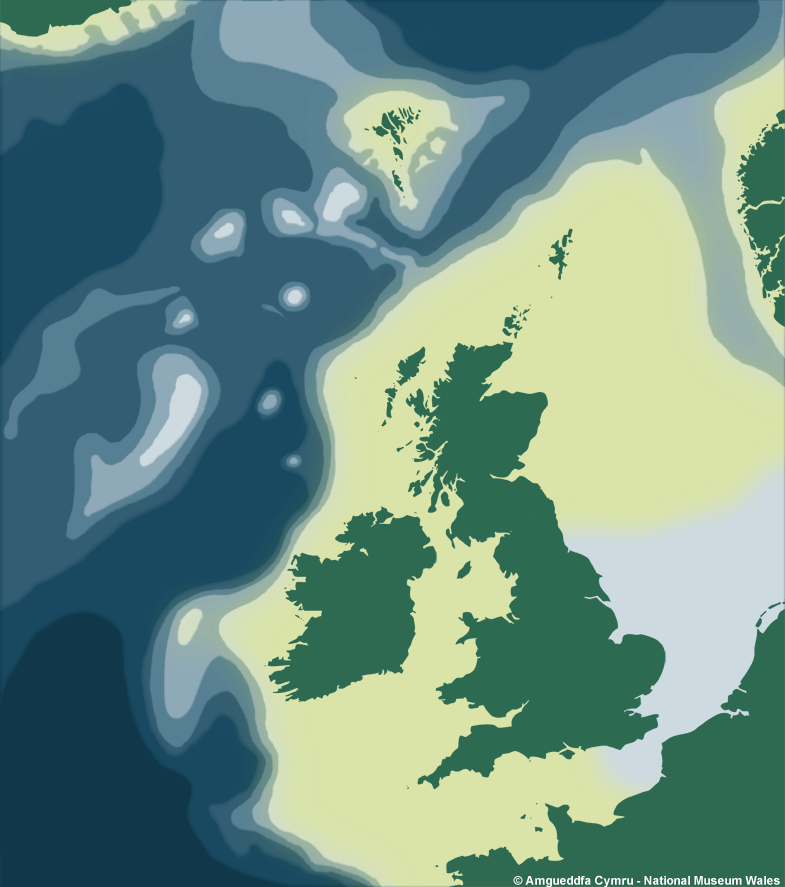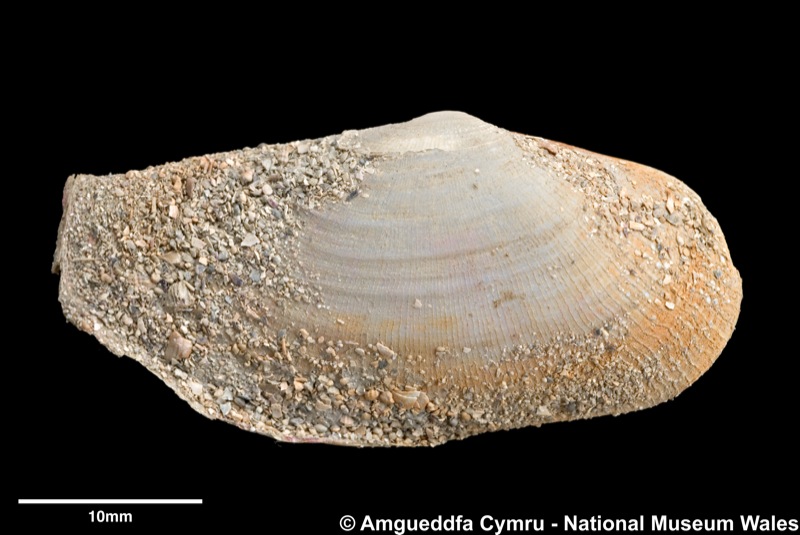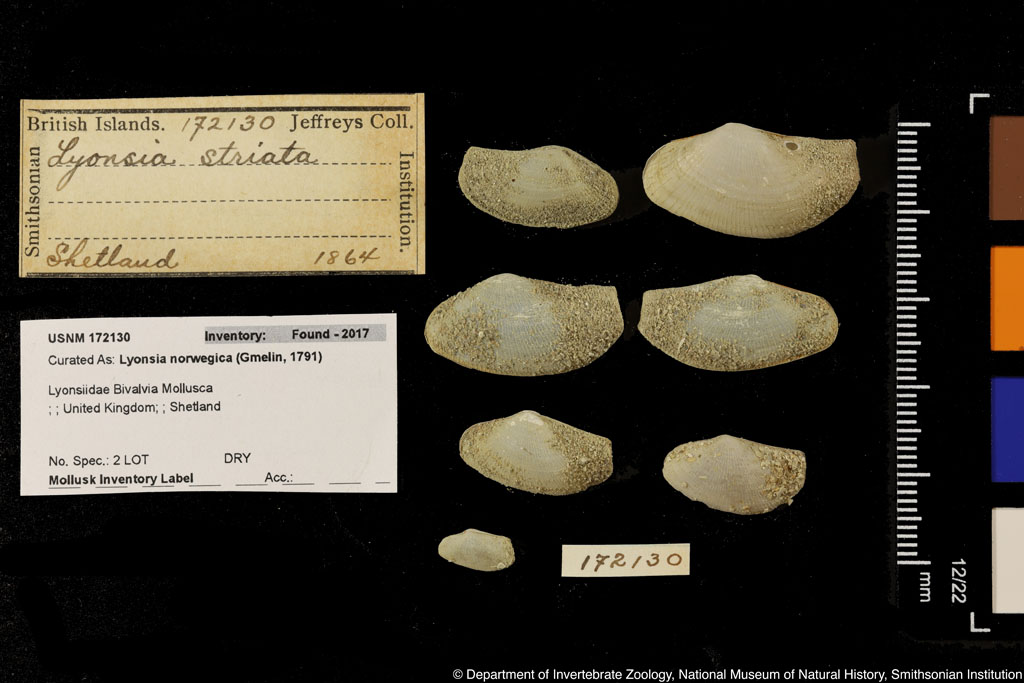Lyonsia norwegica (Gmelin, 1791)
Pandoroidea : Lyonsiidae |
| Tebble name: | Lyonsia norwegica (Gmelin) |
| Smith & Heppell name: | Lyonsia norwegica (Gmelin, 1791) |
To size: To 44mm. Shell Structure: Thin, fragile. Equivalve: Slightly inequivalve, LV encroaches on RV. Equilateral: Inequilateral, beaks to anterior. Outline: Ovate, truncated to posterior. Dorsal margin almost straight, to truncate posterior margin. Uneven, very broadly curved ventral margin to narrowly curved anterior margin. Anterior and posterior gape.
Sculpture: Concentric growth lines, radial lines. Margin: Smooth. Ligament: Internal, thin, pale brown, pointing at roughly 30° from dorsal margin to posterior. Hinge: Lithodesma in LV projecting posteriorly. No teeth. Pallial Musculature: Very shallow pallial sinus. Periostracum: Beige. Colour: White.
Distribution & Ecology
Depth Range
Continental Shelf (to 200m)

Additional Information & Related Species
Related Species
Pandoroidea : Lyonsiidae
References
Listed are literature citing Lyonsia norwegica (Gmelin, 1791). Reference containing the species Type Description is highlighted.
|
Gmelin J F 1791. Carli Linnaei systema Naturae per regna tria naturae. Editio decimatertia, aucta, reformata, Vermes Testacea 1 (6). Lipsiae. 3021-3910. |
Resources
- Conchological Society
of Great Britain & Ireland
Provides resources for understanding, identifying, recording, and conserving molluscs - CLEMAM
Check List of European Marine Mollusca - MarLIN
The Marine Life Information Network for Britain and Ireland (MarLIN) provides information for marine environmental management, protection and education. It is a centre of excellence in spatially based and time-series marine biological information and supports good stewardship in the marine environment. - NBN Gateway
National Biodiversity Network's Gateway. Use it to explore UK biodiversity data, as contributed by participating data providers. - BivAToL
- MarBEF
- Malacological Society
- Unitas Malacologica
- Census of Marine Life
- MarBEF
MarBEF, a network of excellence funded by the European Union and consisting of 94 European marine institutes, is a platform to integrate and disseminate knowledge and expertise on marine biodiversity, with links to researchers, industry, stakeholders and the general public.






